Pink mold often presents itself as a persistent and unsightly problem in homes, particularly in wet and humid environments such as bathrooms and kitchens. This misleading term does not refer to a fungus as the word “mold” might suggest, but is instead a bacterium, specifically Serratia marcescens.
This bacterial growth is known for its pink to orange-red coloration and can develop on various surfaces including shower tiles, toilet bowls, and even in pet bowls where there is ample moisture and a food source.
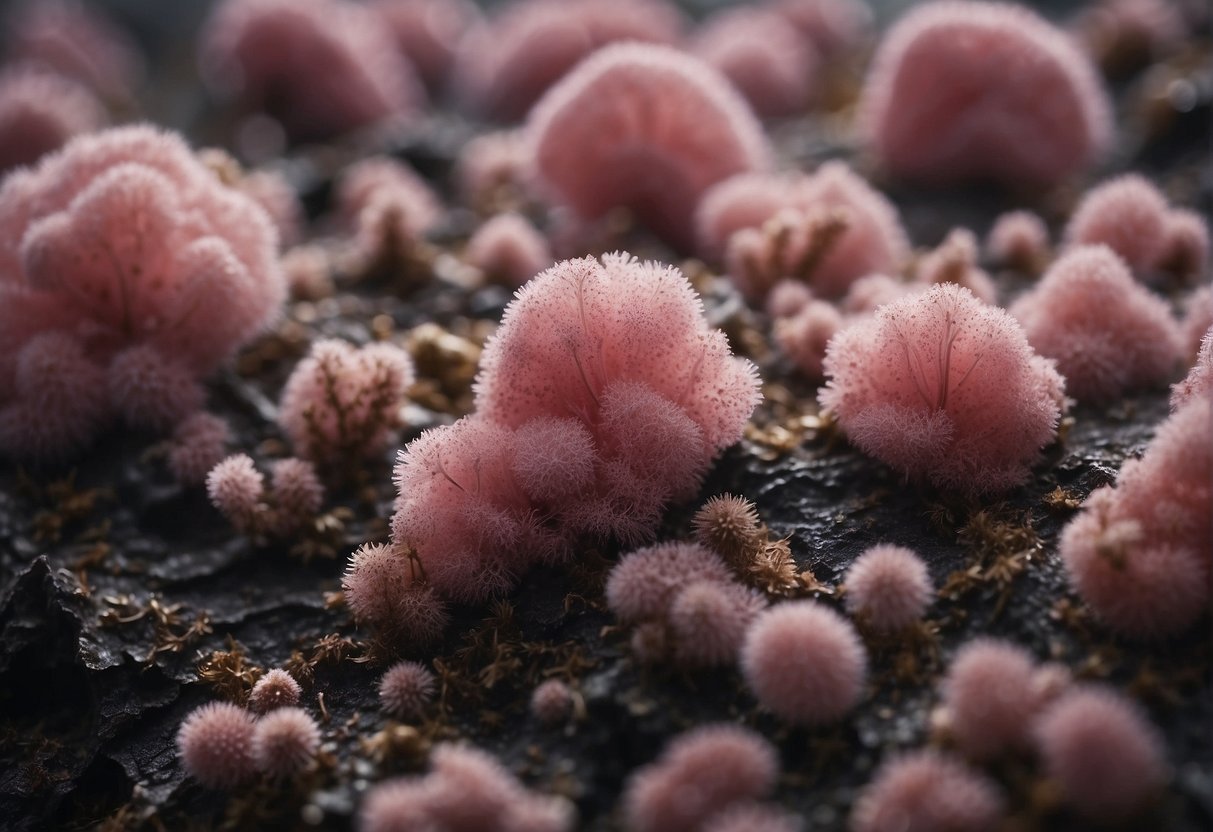
The presence of pink mold is not just a cosmetic issue. Serratia marcescens is an opportunistic pathogen capable of causing infections if it enters the body through routes such as the respiratory tract, eyes, or open wounds. While not everyone exposed to pink mold will get sick, those with weakened immune systems, respiratory conditions, or open wounds are at higher risk.
Managing pink mold involves thorough cleaning and preventive measures. Regular cleaning with suitable household products can remove existing bacteria and prevent its growth.
To avoid recurrence, it’s crucial to maintain dry conditions and good ventilation in affected areas since the bacteria thrive in moist environments. Addressing leaks promptly and drying wet surfaces can significantly reduce the risk of pink mold proliferation.
Identifying Pink Mold
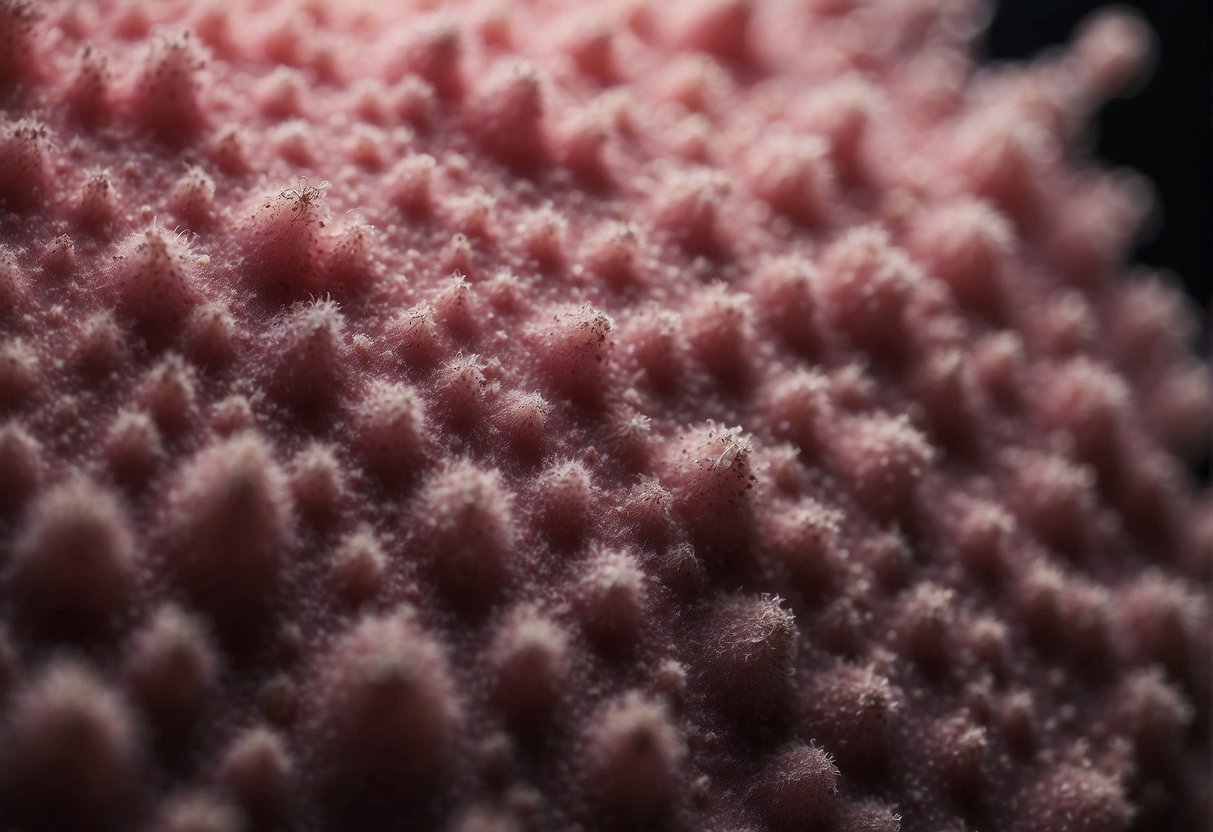
Pink mold is not a true mold, but a bacterial growth. Proper identification is crucial for effective removal and prevention.
Characteristics and Color
Pink mold is characterized by its distinctive pink to pinkish-orange coloration, which typically presents as a slimy film. This bacterium, often mistaken for a true fungal mold, is scientifically known as Serratia marcescens. Unlike molds which are fungi, pink mold is a bacterial growth that requires a moist environment to thrive.
Common Locations in the Home
This organism commonly inhabits damp areas in the home, especially in the bathroom. Homeowners may find it on shower curtains, within the tub, and around sinks. Shower walls and bathroom tiles provide ideal surfaces for pink mold to attach, particularly if they are frequently wet and have soap and shampoo residues.
Differences Between Pink Mold and Other Molds
When compared to fungal molds like black mold (Stachybotrys chartarum) or other molds in the home such as Aureobasidium and Fusarium, pink mold is usually distinct in color. However, it shares the same favored conditions, which are moist and poorly ventilated environments.
One of the most commonly encountered indoor molds is Aureobasidium pullulans, identifiable by its pinkish or black color as it ages, differing from the consistently pink hue of the bacterial growth referred to as pink mold.
Health Risks Associated With Pink Mold
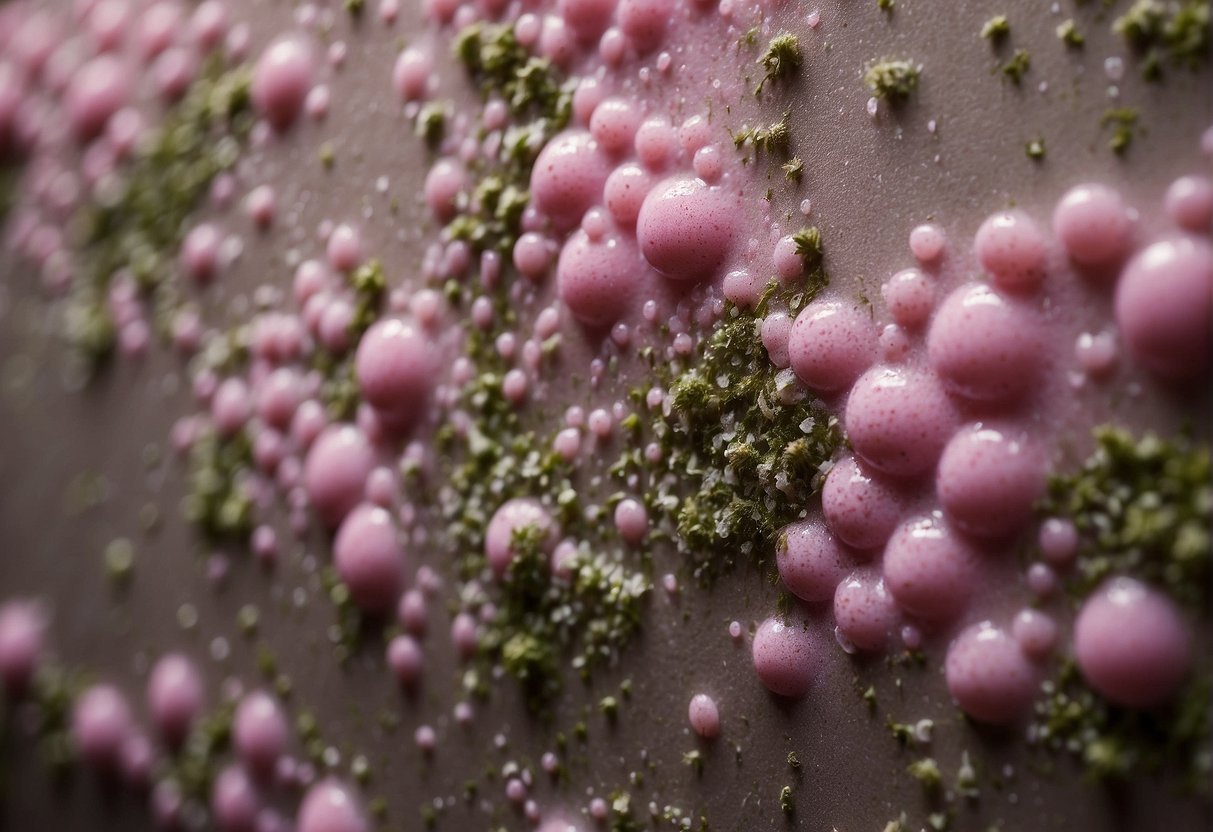
Pink mold is a term commonly used to describe bacterial growth, typically of the Serratia marcescens or Aureobasidium pullulans variety. Exposure to pink mold can pose health risks, particularly to individuals with compromised immune systems, pre-existing health conditions, or the elderly.
Infections and Compromised Immune Systems
Immunocompromised individuals – such as those undergoing chemotherapy, living with HIV/AIDS, or having undergone organ transplants – may be more susceptible to infections from pink mold. This bacterial growth can lead to various infections, including those in the respiratory tract and urinary tract infections (UTIs). The risk is higher in settings such as hospitals and nursing homes where bacterial spread is more prevalent.
Respiratory Issues and Allergic Reactions
Respiratory Problems: Those exposed to pink mold may experience respiratory issues like coughing, wheezing, and bronchitis. Individuals with asthma or mold allergies are particularly at risk.
- Allergic Reactions: It can cause skin irritation and allergic reactions.
- Severe Cases: In severe cases, exposure to pink mold spores can lead to pneumonia or a serious respiratory tract infection.
People with health problems over long-term exposure may develop chronic respiratory conditions. However, it’s important to note that not everyone exposed to pink mold will experience health complications. The presence of pink mold should prompt remediation to minimize any associated health risks.
Preventing Pink Mold Growth
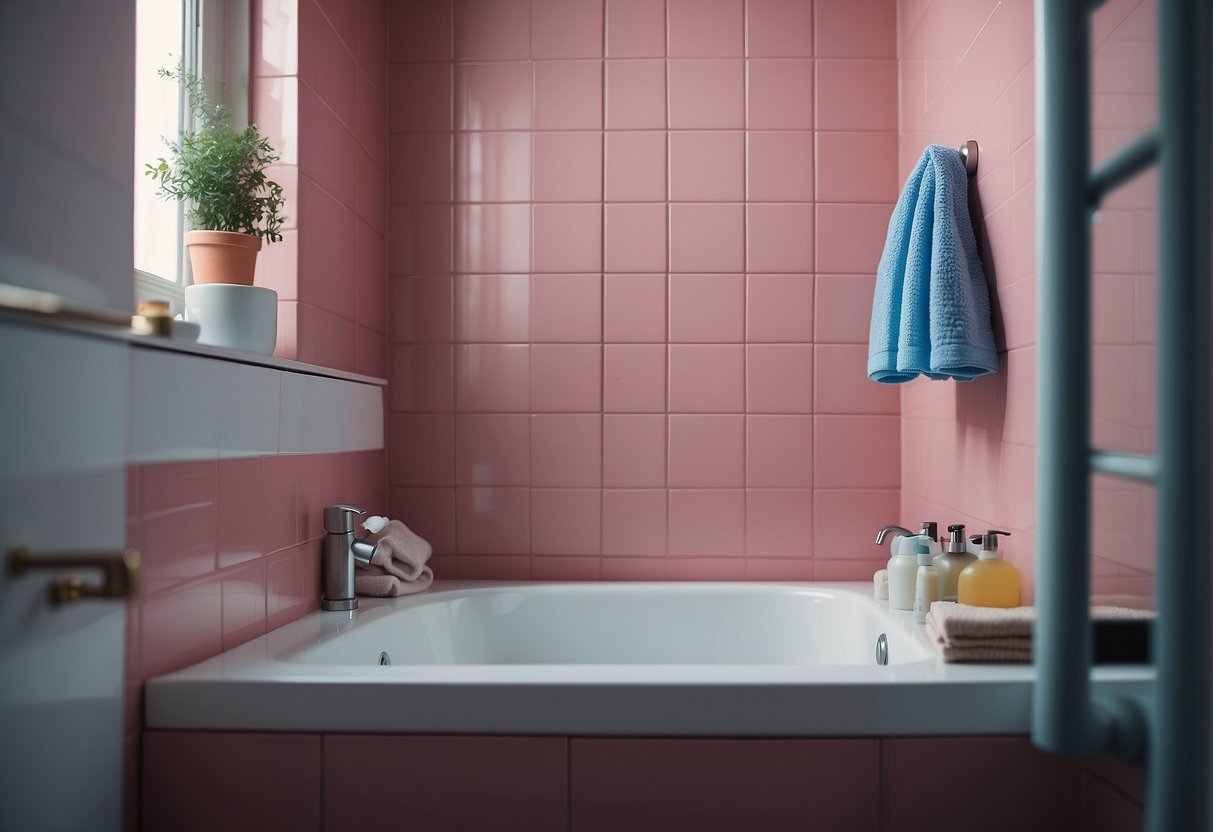
Preventing pink mold growth involves regular cleaning and maintaining an environment that is unfavorable to its development. A proactive approach to cleanliness and humidity control can significantly reduce the risks associated with pink mold in homes.
Cleaning and Disinfecting Strategies
Regular Cleaning: Homeowners should clean bathrooms and kitchens, focusing on damp areas where pink mold is prone to grow. This includes scrubbing tiles, bathtubs, and shower curtains regularly to remove biofilm and prevent mold growth. Surfaces should be dried thoroughly after cleaning.
- Bathrooms: Pay particular attention to cleaning grout, shower curtains, and any areas that remain damp.
- Washing Machines and Dishwashers: These appliances should also be cleaned frequently to prevent biofilm buildup that supports fungal and bacterial growth.
Disinfecting: Use a bleach solution (1 part bleach to 10 parts water) or other mold-killing solutions such as borax, vinegar, or hydrogen peroxide to disinfect areas susceptible to mold. It is crucial to use these cleaners separately to prevent chemical reactions.
- Safety Note: When using disinfectants, ensure adequate ventilation and use gloves to protect the skin.
Environmental Controls and Maintenance
Humidity Control: Utilize dehumidifiers and ensure bathrooms are well-ventilated to maintain low humidity levels. This helps prevent the conditions pink mold requires to flourish.
- Ventilation: Install exhaust fans in bathrooms and kitchens to reduce moisture.
- Humidifiers: Clean humidifier tanks regularly to prevent mold spores from dispersing into the air.
Maintenance: Fix leaks promptly and inspect pipes for damage to prevent excess water accumulation, which can lead to mold growth. Ensure that bathrooms and basements, known for being damp, are kept dry and well-aired.
- Floors and Walls: Keep floors and other surfaces as dry as possible, and address any dampness immediately.
- Children and Pets: Monitor areas where children and pets play for signs of dampness and clean them regularly to prevent mold spread.
Practical Removal Tips
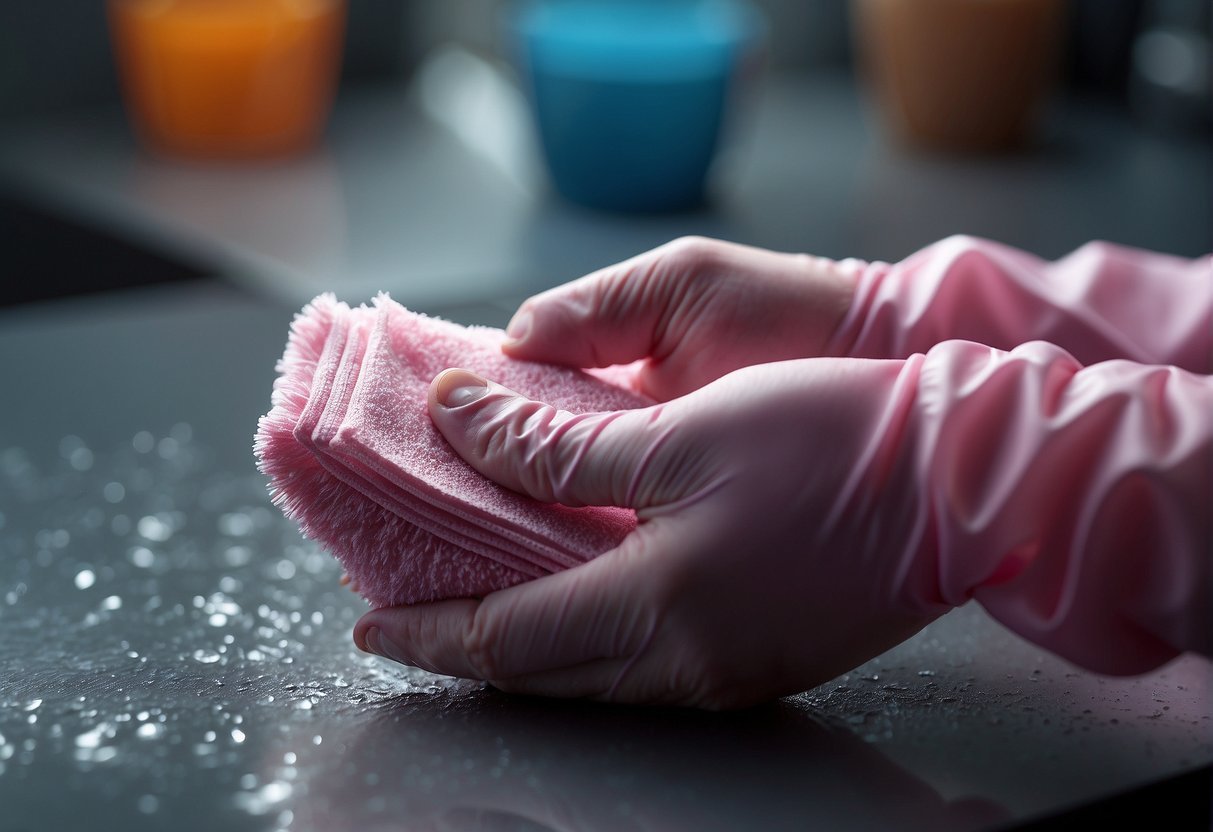
Removing pink mold effectively requires the right approach with household cleaning agents or considering professional remediation when necessary.
Household Cleaning Agents and Techniques
When tackling pink mold, individuals should wear protective gear like gloves and goggles to avoid contact with spores. A simple and effective cleaning solution can be made by combining 1/2 cup of baking soda with 1 tablespoon of liquid dish soap. This mixture can be applied directly to moldy areas. For stubborn mold, a disinfectant mixture of 1.5 cups of bleach with 1 gallon of water (1:10 ratio) should be used.
It’s important to use these solutions in well-ventilated areas. After application, scrub the affected areas with a brush to remove soap scum and shampoo residue that can feed mold growth. Rinse thoroughly with water and, if possible, dry the area with a squeegee to minimize moisture.
| Cleaning Agent | Use |
|---|---|
| Baking soda & soap | Scrubbing paste for mold removal |
| Vinegar | Natural disinfectant for mildew |
| Bleach solution | Disinfectant for killing mold spores |
Professional Mold Remediation and When to Hire
Sometimes, despite one’s best efforts, pink mold can persist, especially if it has penetrated porous surfaces or there’s an underlying moisture problem. In such cases, it may be prudent to contact a professional mold remediation specialist.
These professionals have access to advanced tools and methods to eradicate mold. It is especially advisable to seek professional help if individuals have health concerns, the affected area is large, or if the infestation returns quickly after cleaning.
A specialist will not only remove the mold but will also address the source of the moisture to prevent future growth. They wear comprehensive protective gear, including respirator masks and full-body suits, and follow strict protocols to ensure thorough cleaning and disinfection.